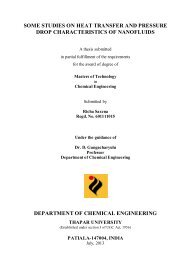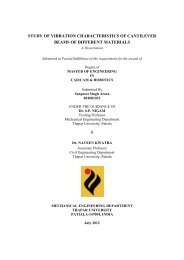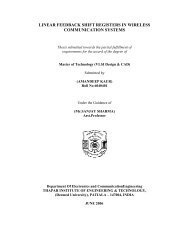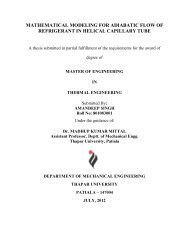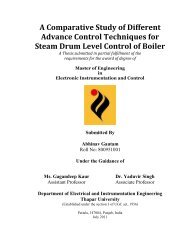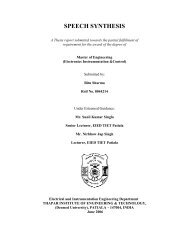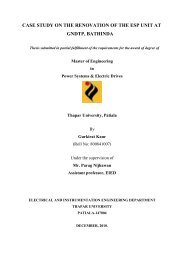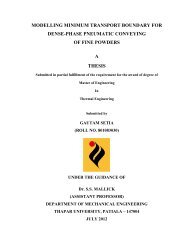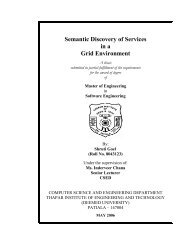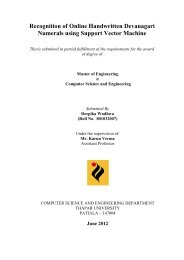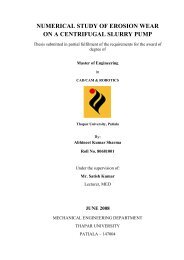from indigenous fermented foods and human gut ... - Thapar University
from indigenous fermented foods and human gut ... - Thapar University
from indigenous fermented foods and human gut ... - Thapar University
You also want an ePaper? Increase the reach of your titles
YUMPU automatically turns print PDFs into web optimized ePapers that Google loves.
36<br />
Chapter II Review of Literature<br />
2000). The consumption of yogurt <strong>and</strong> <strong>fermented</strong> milk containing lactic acid bacteria has<br />
been proven to alleviate lactose indigestion symptoms because of the lower lactose content,<br />
<strong>and</strong> its hydrolysis by microbial β-galactosidase (Gillil<strong>and</strong> <strong>and</strong> Kim, 1984; Mustapha et al.,<br />
1997). This enzyme is sensitive to low pH <strong>and</strong>, therefore, bacteria surviving low pH protect<br />
the enzyme <strong>from</strong> activity loss until it reaches its site of action, which is the small intestine<br />
(Zarate et al., 2000).<br />
On the other h<strong>and</strong>, bacteria sensitive to bile salts present a membrane with increased<br />
permeability, which allows two events which may or may not be exclusive: one is the<br />
transport of the substrate at higher rates into the bacterial cell, <strong>and</strong> the other one is the<br />
increased release of the bacterial enzyme into the lumen. Probiotic bacteria, with higher<br />
resistance to bile salts, release less amounts of enzyme into the lumen. Therefore, yogurt<br />
starter cultures which do not survive the effect of bile, seem to be more effective in<br />
alleviation of lactose intolerance (de Vrese et al., 2000).<br />
Another desirable property of some probiotic strains is their ability to reduce<br />
cholesterol levels (De Smet et al., 1998; du Toit et al., 1998). This property has been partly<br />
related to bile salt hydrolase (BSH), which deconjugates bile salts by releasing the amino acid<br />
(taurine or glycine) bound to the side chain of the steroid core. Deconjugated bile salts are<br />
less soluble, <strong>and</strong> thus easily excreted via faeces, resulting in decreased reabsorption <strong>and</strong><br />
recirculation of bile salts into the liver. Consequently, more cholesterol is needed for de novo<br />
synthesis of bile salts (Usman <strong>and</strong> Hosono, 1999). BSH activity has also been related to the<br />
ability of some bacteria to survive bile <strong>and</strong> colonize the intestine (De Smet et al., 1995;<br />
Klaenhammer <strong>and</strong> Kullen, 1999), but this hypothesis is controversial because others have<br />
found that deconjugated salts are more toxic than their conjugated counterparts (Grill et al.,



